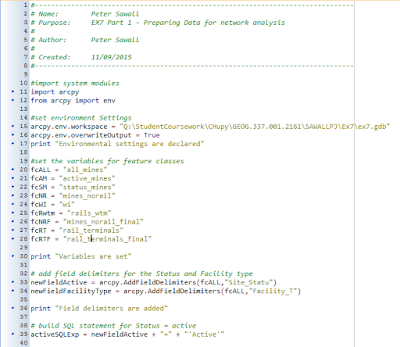The western half of the State of Wisconsin sits on the ancient remains of a shallow sea. In the Cambrian Period, layers upon layers of sand collected on the seafloor and slowly, over time, compressed into sandstone. The constant movement of the sand across the seafloor smashed the grains of sand into one another, breaking off any sharp corners, leaving the grains smooth and round. As the sea slowly retreated east, the sand started to become covered with coral, which would form the limestone that composes the bedrock of eastern Wisconsin. If the sea hadn't retreated, western Wisconsin's sandstone formations would have also been covered by limestone layers, making their extraction cost-prohibitive.
 |
| Figure 1: The bedrock of central Wisconsin is defined by sandstone formations. |
The expansive sandstone formations of Wisconsin have been a source of sand for glassblowing and other industries for over 100 years, but in recent years, demand has increased for the incredibly smooth grains of ancient sandstone. This demand has come from the oil and natural gas industries.
 |
Figure 2: Sand with varying grain sizes and shapes.
(https://upload.wikimedia.org/wikipedia/commons/9/91/Sand_Grains.jpg) |
 |
Figure 3: Frac Sand
(http://wgnhs.uwex.edu/pubs/fs05/) |
Oil and natural gas naturally occur between layers of rock, deep below the ground. When extracted, their removal can cause overlying layers of rock to collapse, stopping the flow of natural gas or oil from the well. Hydraulic Fracturing (fracking), is a process that circumvents this problem by causing it in a controlled way. When a well is drilled deep into a oil or gas deposit, small cracks are created in the rock. Next, the engineers inject water, sand, and some binding chemicals into the cracks, to hold them open. The sand prevents the layers from collapsing, and allows substantially more oil and gas to be extracted from the wells. Sand taken from the ancient sandstone formations has proven to be the best for this process, because its rounded grains are all of the same size.
 |
Figure 4: An explanation of the fracking process.
(https://sites.google.com/a/cornell.edu/the-controversial-sustainable-energy-extraction-method-hydrofracking/home/definition-what-is-hydrofracking) |
 |
Figure 5: This map shows sandstone formations with
minimal overburden. |
In order to get the sand from the ground into an active fracking operation, several steps must be done. First, the topsoil or "overburden" must be removed from above the desired formation (Figure 5). Next, if the sandstone formation is loosely cemented, the sand is excavated by front ended loaders or excavators and sent to be processed. If the formation is tightly cemented, blasting can be done to loosen the formation. The chunks of sandstone formation broken off by the blasting process are crushed into smaller pieces, for easier processing. Processing consists of washing and repeatedly sorting the sand, to ensure that all of the grains are the same size. After the sand has been processed, it is transported to the fracking location via rail. When a mine extracts all available frac sand, they transition into a reclamation process involving the stabilization of walls, and refilling the mine site with the overburden.
 |
Figure 6: The increase of frac sand mine operations between 2012 and 2014.
(http://wgnhs.uwex.edu/pubs/fs05/ , http://wcwrpc.org/frac-sand-factsheet.pdf) |
Frac sand mining is rapidly expanding throughout western Wisconsin, and this isn't without problems (Figure 6). Frac sand mining produces air pollution from both the dust generated from the extraction process and greenhouse gas emissions from the machinery used to process and transport the sand. The mining process can also have impacts on water as a result of processing sand, mining sand from below the water table, or possibly from sand-laden water flowing into wetlands. There are also concerns from runoff impacting the fisheries by increasing the turbidity of the water, and by possibly suffocating eggs under layers of sediment. There have also been issues with excess light and noise pollution caused by mine operations. The transportation of sand along roadways has also caused increased deterioration as a result of the increased traffic.
 |
Figure 7: Frac sand mining has caused increased rail traffic.
( http://wisconsinwatch.org/2015/04/12-sandy-gifs-an-animated-guide-to-wisconsins-frac-sand-rush/) |
Throughout the course of this class, Geographic Information Systems will be used to study the impacts of frac sand mining on Western Wisconsin. We will be focusing on how the mines have increased the amount of traffic on the roadways of western Wisconsin and the resulting costs to the counties who maintain them. We will also design suitability models to determine ideal locations for future frac sand mines to be located in order to maximize the output, and minimize environmental impacts.
Sources:
http://wgnhs.uwex.edu/wisconsin-geology/frac-sand-mining/
http://dnr.wi.gov/topic/Mines/documents/SilicaSandMiningFinal.pdf
http://wisconsinwatch.org/2015/04/12-sandy-gifs-an-animated-guide-to-wisconsins-frac-sand-rush/
http://www.mpm.edu/content/collections/learn/reef/geol-wisc.html












